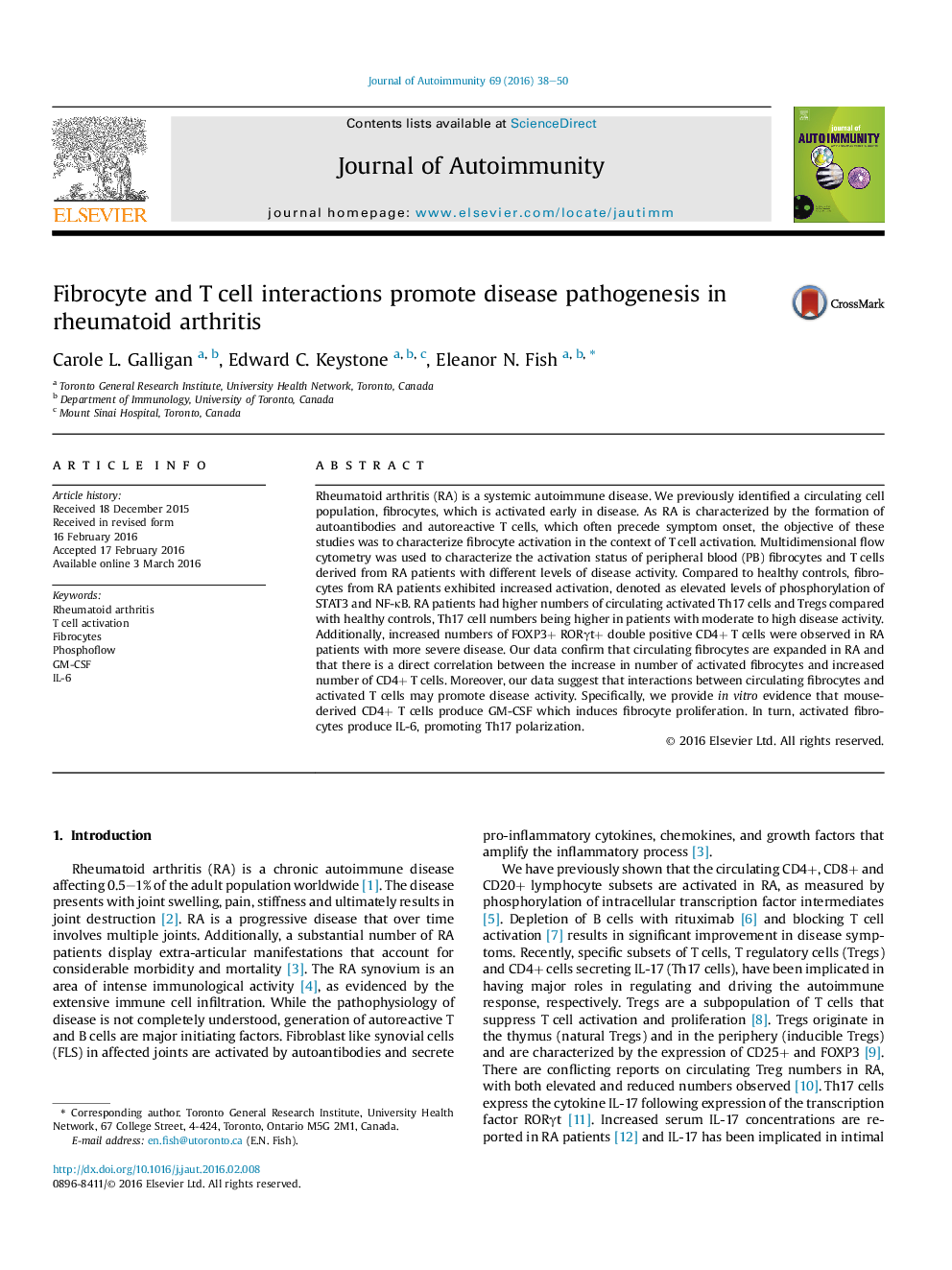| Article ID | Journal | Published Year | Pages | File Type |
|---|---|---|---|---|
| 3367665 | Journal of Autoimmunity | 2016 | 13 Pages |
•Fibrocytes are activated in the peripheral blood of RA patients.•Number of fibrocytes correlates with number of activated T cells in RA.•Th17/Treg cell activation profiles reflect disease activity.•Fibrocyte-T cell interactions may promote disease activity.
Rheumatoid arthritis (RA) is a systemic autoimmune disease. We previously identified a circulating cell population, fibrocytes, which is activated early in disease. As RA is characterized by the formation of autoantibodies and autoreactive T cells, which often precede symptom onset, the objective of these studies was to characterize fibrocyte activation in the context of T cell activation. Multidimensional flow cytometry was used to characterize the activation status of peripheral blood (PB) fibrocytes and T cells derived from RA patients with different levels of disease activity. Compared to healthy controls, fibrocytes from RA patients exhibited increased activation, denoted as elevated levels of phosphorylation of STAT3 and NF-κB. RA patients had higher numbers of circulating activated Th17 cells and Tregs compared with healthy controls, Th17 cell numbers being higher in patients with moderate to high disease activity. Additionally, increased numbers of FOXP3+ RORγt+ double positive CD4+ T cells were observed in RA patients with more severe disease. Our data confirm that circulating fibrocytes are expanded in RA and that there is a direct correlation between the increase in number of activated fibrocytes and increased number of CD4+ T cells. Moreover, our data suggest that interactions between circulating fibrocytes and activated T cells may promote disease activity. Specifically, we provide in vitro evidence that mouse-derived CD4+ T cells produce GM-CSF which induces fibrocyte proliferation. In turn, activated fibrocytes produce IL-6, promoting Th17 polarization.
